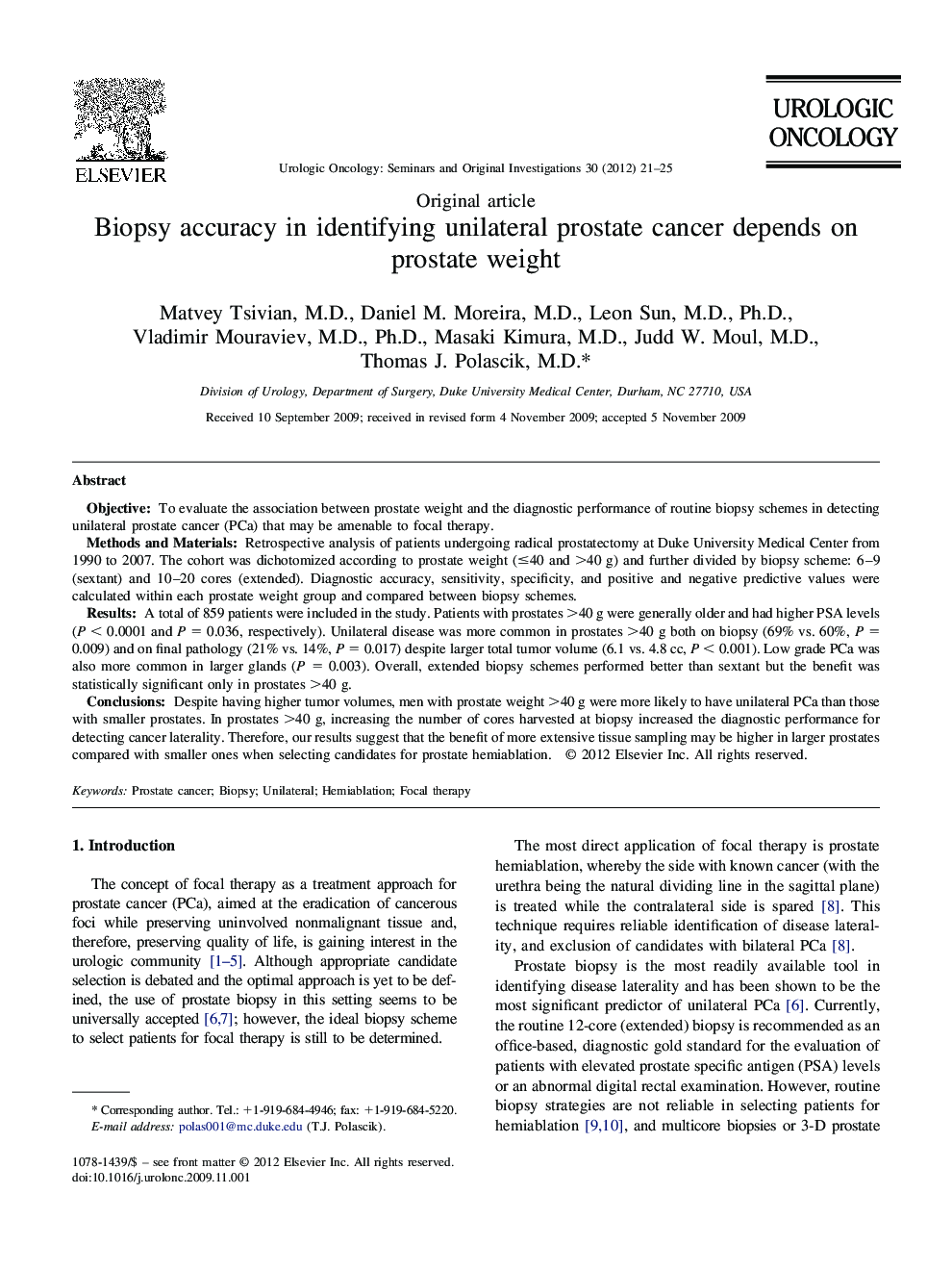| Article ID | Journal | Published Year | Pages | File Type |
|---|---|---|---|---|
| 4000342 | Urologic Oncology: Seminars and Original Investigations | 2012 | 5 Pages |
ObjectiveTo evaluate the association between prostate weight and the diagnostic performance of routine biopsy schemes in detecting unilateral prostate cancer (PCa) that may be amenable to focal therapy.Methods and MaterialsRetrospective analysis of patients undergoing radical prostatectomy at Duke University Medical Center from 1990 to 2007. The cohort was dichotomized according to prostate weight (≤40 and >40 g) and further divided by biopsy scheme: 6–9 (sextant) and 10–20 cores (extended). Diagnostic accuracy, sensitivity, specificity, and positive and negative predictive values were calculated within each prostate weight group and compared between biopsy schemes.ResultsA total of 859 patients were included in the study. Patients with prostates >40 g were generally older and had higher PSA levels (P < 0.0001 and P = 0.036, respectively). Unilateral disease was more common in prostates >40 g both on biopsy (69% vs. 60%, P = 0.009) and on final pathology (21% vs. 14%, P = 0.017) despite larger total tumor volume (6.1 vs. 4.8 cc, P < 0.001). Low grade PCa was also more common in larger glands (P = 0.003). Overall, extended biopsy schemes performed better than sextant but the benefit was statistically significant only in prostates >40 g.ConclusionsDespite having higher tumor volumes, men with prostate weight >40 g were more likely to have unilateral PCa than those with smaller prostates. In prostates >40 g, increasing the number of cores harvested at biopsy increased the diagnostic performance for detecting cancer laterality. Therefore, our results suggest that the benefit of more extensive tissue sampling may be higher in larger prostates compared with smaller ones when selecting candidates for prostate hemiablation.
